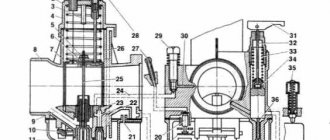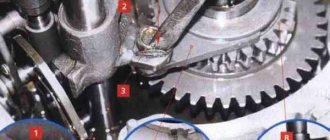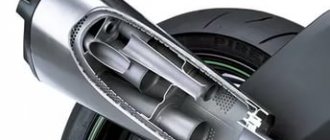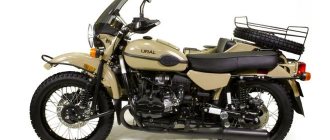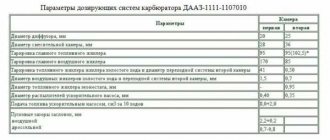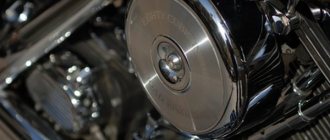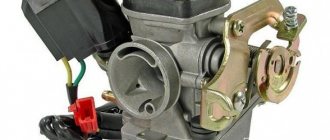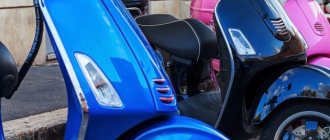In order for a motorcycle engine to start without problems and gain speed well, at least two systems must work. One of them is the ignition system, the second is the power system. Simply put, there must be a spark in the combustion chamber at the right time and fuel mixed with air must enter the cylinder in the required quantity.
So about fuel. Before setting up the power system, you need to make sure that the ignition system is configured and working as it should. Are you sure everything is fine? Then let's begin.
You need to start with candles.
They can tell you a lot. We unscrew the spark plugs after driving along the highway for about thirty kilometers, at least at medium or higher engine speeds, and carefully inspect them. Black carbon deposits, similar to soot, indicate that there is not enough air for the mixture to burn normally. The mixture is rich. Lots of gasoline and little air. If the spark plug insulator is completely free of soot or white, then the mixture is poor. Too much air and not enough gasoline. Normal color should be sand to brick red. If the spark plug insulator is of normal color, then you shouldn’t go into the carburetor. You should be guided by the rule that the best is the enemy of the good.
If the carburetor gets rich
First of all, we inspect the air filter. It may be dirty. The air passages may also be blocked, for example, a rag has been sucked in, the air pipe is pinched, or the air damper does not open completely. We sorted out the air supply, everything is clean, free, without obstacles. Go ahead.
You can remove the carburetor, completely disassemble it, wash it, blow out all the channels, dry it and reassemble it, but complete disassembly is not always required; more often you can get by with just adjustments. But if your carburetor does not respond to the rotation of the quality adjusting screw, then disassembling and washing is simply necessary.
First of all, check the fuel level in the float chamber
. How to do it?
We start by checking the shut-off valve or, simply put, the needle. A shut-off valve that does not hold is the cause of many troubles. Including an increased level of gasoline, which leads to over-enrichment of the mixture. On carburetors K-62, K-63, K-65, K-68, needle valves come in two types. With a ring or a rubber cone. To get to it, you need to remove the bottom cover of the carburetor, which is attached to the body with two screws (be careful when removing, do not damage the gasket), then remove the float, carefully pushing its axis out of the guides. The needle, as a rule, remains on the float tongue or falls out. Be careful not to lose it.
We inspect the needle, if it has a rubber cone, then we inspect the cone, it should be free of damage and foreign objects (hairs, grains of sand, etc.). If the needle has an o-ring, then look at how this ring sits on the head of the needle. If the ring is loose or missing altogether, it is necessary to replace (install) either only the o-ring or the needle. The ring should fit tightly. The needle must move along the seat without jamming, otherwise we replace the entire valve.
With the carburetor removed, you can check the level like this.
We turn the carburetor over with the float up and measure the distance from the plane of the body to the very top of the float. It should be within 26-27 mm. If it does not match, then adjust the size by bending the float tongue.
Is it possible to check and adjust the fuel level without removing carburetors in the Urals? Are they installed on the cylinder heads at angles to the horizontal and vertical planes?
With some skill this is possible. To do this, you will need a free float from the same carburetor. In a motorcycle mounted on the central stand (we are talking about a single motorcycle), open the gas tap. We wait a while for the carburetors to fill with gasoline. Close the gas valve and disconnect the gas hose from the carburetor. Remove the bottom cap of the carburetor with gasoline and lower the spare float into it. Next, we lean the lid against the lower plane of the body so that the planes of the lid become a continuation of the plane of the body (we simulate the installation of the lid, set the actual angle of inclination of the lower part), while the fuel level should be below the edge of the lowest corner of the lid and not overflow through it . If it does not correspond, then by bending and bending the tongue we achieve the desired level. In this case, the bottom cover and gas hose will have to be removed and replaced several times to test filling with gasoline. After adjusting the level, we proceed to the next one.
Adjusting idle speed and mixture quality (Carburetor K-62, 63, 65, 68).
We make adjustments on a warm engine. The procedure is approximately this:
1. Set the minimum stable engine speed by rotating the quantity screw (on K-62,63,65 this is the top 13mm wrench bolt, on K-68 this is a horizontal screw for a screwdriver). 2. Slowly rotating the quality screw in one direction or another (on all of the listed types of carburetors this is a vertical screw for a screwdriver), we catch the moment the speed increases to the maximum (approximately 1.5-2.5 turns from the fully tightened position, but deviations in that direction are possible or other party). 3. Repeat steps 1 and 2 until normal idle speed is established. 4. Check the adjustment by opening and closing the throttle. 5. If the engine stalls when you sharply open the throttle, turn the quality screw 1/4-1/2 turn (enrich the mixture). 6. If the engine stalls when the throttle is suddenly closed, turn out the quality screw 1/4-1/2 turn (lean the mixture).
Owners of motorcycles not only made in Russia, but also of foreign cars often face the problem of “shooting” from the muffler. This happens due to improper care of the air-fuel mixture ignition system. The motorcycle shoots the muffler in several cases:
- when using low-quality gasoline;
- malfunction of the electronics system responsible for fuel supply;
- gasoline does not enter the combustion chamber in pure form;
In such cases, you don’t need to wonder why the muffler on a motorcycle shoots. Poor quality gasoline has a very high combustion temperature due to the addition of water, so it does not ignite completely. The remaining drops fall on the walls of the heated muffler
. Their ignition creates pops.
The motorcycle also shoots into the muffler when releasing the gas. The lower the pressure created in the internal combustion chamber, the more droplets enter the muffler. On some bikes, fuel accumulates in the muffler, followed by rare but very loud bangs.
Most often, but not always, owners of the Russian motorcycle industry face this problem. For example, a Ural motorcycle shoots into the carburetor. This occurs due to direct clogging of gasoline in the carburetor itself. To avoid this problem, it is necessary to constantly clean the filters and change the consumables responsible for cleaning the engine. Proper operation of your bike will not only ensure good engine performance, but will also maintain factory specifications.
Popping sounds in the scooter carburetor - the main reasons
You can often notice popping noises coming from the carburetor, which may indicate a violation of the mixture formation and some problems with ignition. In any case, for normal operation of the scooter engine, the problem must be eliminated. Let's look at all the reasons in more detail.
Why do popping noises appear in a scooter carburetor?
So, we started the scooter, started adding gas and heard popping noises in the carburetor. Note that we are not talking about the exhaust pipe.
Popping noises in a scooter's carburetor usually indicate a lean mixture. Why did the mixture become lean suddenly, with the engine running normally? There may also be two reasons for this.
- The first, and most common, is clogging of the carburetor, as a result of which air is supplied in the same amount, but much less gasoline, since the channel or nozzle is already blocked, although not completely, but still. Testing this theory is quite simple: close the inlet of the air filter by half the diameter. If after this the claps stop or become less intrusive, the reason for the depletion is obvious.
- Another reason for a lean mixture in this case is air leaks. Additional air can pass through the connection of the pipe with the carburetor and damage the integrity of the pipe or filter. This theory is tested in the same way as with a clogged carburetor, the effect is the same.
- The second reason for popping noises in a scooter’s carburetor is early ignition. Since the ignition on modern scooters is not regulated, this phenomenon is extremely rare, but it still occurs.
Knowing these main causes of popping noises in a scooter’s carburetor, you can correct the breakdown in a timely manner and prevent further malfunctions due to a lean mixture. And this, as a rule, means overheating of the engine and much more serious malfunctions, including jamming of the piston in the cylinder.
You can also read other articles on the topic:
The problem is common! The carbs are K-68u. This is why the right cylinder shoots into the carburetor. But the shooting is strange! You give it gas, it seems like it’s not noticeable, it rips, it works, but if you put it on the foot and engage 4th gear, pick up a speed of 50-40 km/h, approximately, turning off the right pot, the left one works like clockwork without interruption, and when the left one takes off the candlestick , then the right one starts shooting at the carb, but trying to gain speed and the pops are not strong, but because of this it doesn’t pick up speed right away, and it turns out that at the beginning when you accelerate, not much resonance is created, but at traction and at speed it is, of course, very good you can feel it! I tried the ignition, it doesn't help! Valves are adjusted! But I didn’t check for them to pass through! I tried setting the jets to 125 and 165, no change! I changed the diffuser tubes from 165 to 178! The needle was raised and lowered! The fuel screw was changed (screwed in, unscrewed). Write.
More precisely adjust the synchronization of the carburetors.
Instead of chewing the ignition, it would be logical to do something that has not yet been attempted, namely:
yes, I will need to unhook the cradle to remove the head and immediately change the head gasket! But not because of this. It’s better to ask who has encountered it))))
and synchronicity. I can’t achieve synchronization because it shoots into the carb.
Then think about what might cause the shooting, you are closer there. Put back all the old jets that you removed. The caburators must be the same.
Messages [18]
1↑ Topic from Ural*4uK 07/05/2012 02:35:35
- Ural*4uK
- Elder
- Inactive
- Name: Igor
- From: Russia, Bryansk region, Mglin
- Registered: 03-03-2012
- Messages: 1 451
- Reputation: 39
- Motorcycle: Ural IMZ 8103 with sidecar
Topic: Top hat sneezes!
In my Urals, the left cylinder sneezes at idle, as if air were flying out (when everything is going fine!). Ignition, carbs and valves are tuned! I thought maybe the valves were leaking?
2↑ Reply from mexanik62 05-07-2012 07:20:09
- mexanik62
- Mechanic from the 30s.
- Inactive
- Name: Uncle Vitya
- From: Evpatoria
- Registered: 03-08-2011
- Messages: 10 832
- Reputation: 1 151
- Motorcycle: 12-volt K-750, ZAZ Sens Hatchback
Re: cylinder sneezes!
Lean mixture on the left, unscrew the quality screw
3↑ Reply from Ural*4uK 07/06/2012 14:07:53
- Ural*4uK
- Elder
- Inactive
- Name: Igor
- From: Russia, Bryansk region, Mglin
- Registered: 03-03-2012
- Messages: 1 451
- Reputation: 39
- Motorcycle: Ural IMZ 8103 with sidecar
Re: cylinder sneezes!
I thought so, but because of this sneezing, the candle is sometimes black! At idle it will run fine, at speed it will be normal!
4↑ Reply from mexanik62 07/06/2012 14:40:36
- mexanik62
- Mechanic from the 30s.
- Inactive
- Name: Uncle Vitya
- From: Evpatoria
- Registered: 03-08-2011
- Messages: 10 832
- Reputation: 1 151
- Motorcycle: 12-volt K-750, ZAZ Sens Hatchback
Re: cylinder sneezes!
5↑ Reply from Ural*4uK 07/06/2012 14:41:15
- Ural*4uK
- Elder
- Inactive
- Name: Igor
- From: Russia, Bryansk region, Mglin
- Registered: 03-03-2012
- Messages: 1 451
- Reputation: 39
- Motorcycle: Ural IMZ 8103 with sidecar
Re: cylinder sneezes!
tuned in! I synchronized 2 times!
6↑ Reply from mexanik62 06-07-2012 17:20:55
- mexanik62
- Mechanic from the 30s.
- Inactive
- Name: Uncle Vitya
- From: Evpatoria
- Registered: 03-08-2011
- Messages: 10 832
- Reputation: 1 151
- Motorcycle: 12-volt K-750, ZAZ Sens Hatchback
Re: cylinder sneezes!
Well, when one spark plug is black at idle, it means there is no synchronization at idle IF BOTH PLUGS AT IDLE ARE EQUALLY BLACK SO IT SHOULD BE IN general, after adjusting the idle, you need to slightly enrich the mixture, tighten the quality screw 1/4 turn, then when taking on a load there will be no sneezing or dips
Edited by mexanik62 (06-07-2012 17:23:56)
7↑ Reply from Ural*4uK 07/06/2012 19:09:43
- Ural*4uK
- Elder
- Inactive
- Name: Igor
- From: Russia, Bryansk region, Mglin
- Registered: 03-03-2012
- Messages: 1 451
- Reputation: 39
- Motorcycle: Ural IMZ 8103 with sidecar
Re: cylinder sneezes!
But then how to synchronize at idle?
8↑ Reply from mexanik62 06-07-2012 19:40:11
- mexanik62
- Mechanic from the 30s.
- Inactive
- Name: Uncle Vitya
- From: Evpatoria
- Registered: 03-08-2011
- Messages: 10 832
- Reputation: 1 151
- Motorcycle: 12-volt K-750, ZAZ Sens Hatchback
Re: cylinder sneezes!
You adjust the carbs one by one and remove the caps one by one on one boiler there should be the same speed and the sound of course. You also try the throttle response, lift the carb cable which you check. It should not sneeze and the boiler should pick up speed. If not, you enrich the mixture by tightening the screw, accordingly, you will most likely have to turn it up a little lift with quantity screw
9↑ Reply from Ural*4uK 07/06/2012 21:01:06
- Ural*4uK
- Elder
- Inactive
- Name: Igor
- From: Russia, Bryansk region, Mglin
- Registered: 03-03-2012
- Messages: 1 451
- Reputation: 39
- Motorcycle: Ural IMZ 8103 with sidecar
Re: cylinder sneezes!
and by the way: the right boiler heats up more than the left one
10↑ Reply from mexanik62 06-07-2012 21:53:02
- mexanik62
- Mechanic from the 30s.
- Inactive
- Name: Uncle Vitya
- From: Evpatoria
- Registered: 03-08-2011
- Messages: 10 832
- Reputation: 1 151
- Motorcycle: 12-volt K-750, ZAZ Sens Hatchback
The carburetor sneezes into the air filter on a motorcycle. A motorcycle shoots into the muffler - problem solving
In order for a motorcycle engine to start without problems and gain speed well, at least two systems must work. One of them is the ignition system, the second is the power system. Simply put, there must be a spark in the combustion chamber at the right time and fuel mixed with air must enter the cylinder in the required quantity.
So about fuel. Before setting up the power system, you need to make sure that the ignition system is configured and working as it should. Are you sure everything is fine? Then let's begin.
You need to start with candles.
They can tell you a lot.
We unscrew the spark plugs after driving along the highway for about thirty kilometers, at least at medium or higher engine speeds, and carefully inspect them. Black carbon deposits, similar to soot, indicate that there is not enough air for the mixture to burn normally. The mixture is rich. Lots of gasoline and little air. If the spark plug insulator is completely free of soot or white, then the mixture is poor. Too much air and not enough gasoline. Normal color should be sand to brick red. If the spark plug insulator is of normal color, then you shouldn’t go into the carburetor. You should be guided by the rule that the best is the enemy of the good. Read also: Lada Kalina replacing the front wheel hub
If the carburetor gets rich
First of all, we inspect the air filter. It may be dirty. The air passages may also be blocked, for example, a rag has been sucked in, the air pipe is pinched, or the air damper does not open completely. We sorted out the air supply, everything is clean, free, without obstacles. Go ahead.
You can remove the carburetor, completely disassemble it, wash it, blow out all the channels, dry it and reassemble it, but complete disassembly is not always required; more often you can get by with just adjustments. But if your carburetor does not respond to the rotation of the quality adjusting screw, then disassembling and washing is simply necessary.
First of all, check the fuel level in the float chamber
. How to do it?
We start by checking the shut-off valve or, simply put, the needle. A shut-off valve that does not hold is the cause of many troubles. Including an increased level of gasoline, which leads to over-enrichment of the mixture. On carburetors K-62, K-63, K-65, K-68, needle valves come in two types. With a ring or a rubber cone. To get to it, you need to remove the bottom cover of the carburetor, which is attached to the body with two screws (be careful when removing, do not damage the gasket), then remove the float, carefully pushing its axis out of the guides. The needle, as a rule, remains on the float tongue or falls out. Be careful not to lose it.
We inspect the needle, if it has a rubber cone, then we inspect the cone, it should be free of damage and foreign objects (hairs, grains of sand, etc.). If the needle has an o-ring, then look at how this ring sits on the head of the needle. If the ring is loose or missing altogether, it is necessary to replace (install) either only the o-ring or the needle. The ring should fit tightly. The needle must move along the seat without jamming, otherwise we replace the entire valve.
With the carburetor removed, you can check the level like this.
We turn the carburetor over with the float up and measure the distance from the plane of the body to the very top of the float. It should be within 26-27 mm. If it does not match, then adjust the size by bending the float tongue.
Is it possible to check and adjust the fuel level without removing carburetors in the Urals? Are they installed on the cylinder heads at angles to the horizontal and vertical planes?
With some skill this is possible. To do this, you will need a free float from the same carburetor. In a motorcycle mounted on the central stand (we are talking about a single motorcycle), open the gas tap. We wait a while for the carburetors to fill with gasoline. Close the gas valve and disconnect the gas hose from the carburetor. Remove the bottom cap of the carburetor with gasoline and lower the spare float into it. Next, we lean the lid against the lower plane of the body so that the planes of the lid become a continuation of the plane of the body (we simulate the installation of the lid, set the actual angle of inclination of the lower part), while the fuel level should be below the edge of the lowest corner of the lid and not overflow through it . If it does not correspond, then by bending and bending the tongue we achieve the desired level. In this case, the bottom cover and gas hose will have to be removed and replaced several times to test filling with gasoline. After adjusting the level, we proceed to the next one.
Adjusting idle speed and mixture quality (Carburetor K-62, 63, 65, 68).
We make adjustments on a warm engine. The procedure is approximately this:
1. Set the minimum stable engine speed by rotating the quantity screw (on K-62,63,65 this is the top 13mm wrench bolt, on K-68 this is a horizontal screw for a screwdriver). 2. Slowly rotating the quality screw in one direction or another (on all of the listed types of carburetors this is a vertical screw for a screwdriver), we catch the moment the speed increases to the maximum (approximately 1.5-2.5 turns from the fully tightened position, but deviations in that direction are possible or other party). 3. Repeat steps 1 and 2 until normal idle speed is established. 4. Check the adjustment by opening and closing the throttle. 5. If the engine stalls when you sharply open the throttle, turn the quality screw 1/4-1/2 turn (enrich the mixture). 6. If the engine stalls when the throttle is suddenly closed, turn out the quality screw 1/4-1/2 turn (lean the mixture).
Owners of motorcycles not only made in Russia, but also of foreign cars often face the problem of “shooting” from the muffler. This happens due to improper care of the air-fuel mixture ignition system. The motorcycle shoots the muffler in several cases:
- when using low-quality gasoline;
- malfunction of the electronics system responsible for fuel supply;
- gasoline does not enter the combustion chamber in pure form;
In such cases, you don’t need to wonder why the muffler on a motorcycle shoots. Poor quality gasoline has a very high combustion temperature due to the addition of water, so it does not ignite completely. The remaining drops fall on the walls of the heated muffler
. Their ignition creates pops.
Read also: VAZ windshield washer check valve
The motorcycle also shoots into the muffler when releasing the gas. The lower the pressure created in the internal combustion chamber, the more droplets enter the muffler. On some bikes, fuel accumulates in the muffler, followed by rare but very loud bangs.
Most often, but not always, owners of the Russian motorcycle industry face this problem. For example, a Ural motorcycle shoots into the carburetor. This occurs due to direct clogging of gasoline in the carburetor itself. To avoid this problem, it is necessary to constantly clean the filters and change the consumables responsible for cleaning the engine. Proper operation of your bike will not only ensure good engine performance, but will also maintain factory specifications.
Messages [17]
1↑ Topic by Frol 05-10-2014 20:48:24
- Frol
- Participant
- Inactive
- Name: Alexey
- From: Tula region
- Registered: 29-01-2013
- Messages: 57
- Reputation: 2
- Motorcycle: Ural
Topic: sneezing into carburetor
hi guys. I have the following problem: the right carburetor sneezes and sometimes the engine detonates. I've already tried everything: I changed the carburetors as many as 3 pieces. I ground the valves, I changed the ignition coil to another one, I changed the slider. Turning the ignition doesn't help. What could be the reason, please tell me!
2↑ Reply from mark11 05-10-2014 21:05:15
- mark11
- Assistant
- Inactive
- Name: mark
- From: Rostov region. st.bagaevskaya
- Registered: 19-11-2013
- Messages: 193
- Reputation: 17
- Motorcycle: Dnepr 11
Re: sneezing into carburetor
3↑ Reply from Frol 05-10-2014 21:12:56
- Frol
- Participant
- Inactive
- Name: Alexey
- From: Tula region
- Registered: 29-01-2013
- Messages: 57
- Reputation: 2
- Motorcycle: Ural
Re: sneezing into carburetor
4↑ Reply from shaman507 05-10-2014 21:14:49
- shaman507
- Angry moderator
- Inactive
- Name: Evgeniy
- From: Tambov region
- Registered: 28-05-2013
- Messages: 4 389
- Reputation: 423
- Motorcycle: Dnepr MT 10-36, M-72, Ural IMZ-8.103-10, M-63, IZH-49, Militia Ural single, Minsk M-106
Re: sneezing into carburetor
Did you wipe the headlight? kicked the wheel?
5↑ Reply from Frol 05-10-2014 21:19:25
- Frol
- Participant
- Inactive
- Name: Alexey
- From: Tula region
- Registered: 29-01-2013
- Messages: 57
- Reputation: 2
- Motorcycle: Ural
Re: sneezing into carburetor
funny
6↑ Reply from RaaF37rus 05-10-2014 21:47:20
- RaaF37rus
- Pro
- Inactive
- Name: Sergey
- From: Ivanovo region. Kamenka village
- Registered: 27-07-2013
- Messages: 568
- Reputation: 67
- Motorcycle: IMZ 8-103-10
Re: sneezing into carburetor
there is little fuel and try to make the mixture richer.
Edited by RaaF37rus (05-10-2014 21:47:47)
7↑ Reply from 14 22:07:10
- 666
- Technical support, materials scientist
- Inactive
- Registered: 06-05-2010
- Messages: 6 628
- Reputation: 616
Re: sneezing into carburetor
The intake valve may be pinched or burnt, and if this is observed on both cylinders, it is worth checking the ignition timing.
8↑ Reply from Frol 05-10-2014 23:30:32
- Frol
- Participant
- Inactive
- Name: Alexey
- From: Tula region
- Registered: 29-01-2013
- Messages: 57
- Reputation: 2
- Motorcycle: Ural
Re: sneezing into carburetor
The intake valve may be pinched or burnt, and if this is observed on both cylinders, it is worth checking the ignition timing.
a new valve has been installed, there is a gap, only the right side sneezes and degenerates. I’ve already tried everything. only sneezes at idle
Edited by Frol (05-10-2014 23:32:24)
9↑ Reply from 14 23:33:23
- 666
- Technical support, materials scientist
- Inactive
- Registered: 06-05-2010
- Messages: 6 628
- Reputation: 616
Re: sneezing into carburetor
perhaps air is being sucked in, listen with the engine running, or better yet, whip up some foam and lubricate the head/cylinder and carb/head connections
10↑ Reply from RaaF37rus 06-10-2014 04:32:38
- RaaF37rus
- Pro
- Inactive
- Name: Sergey
- From: Ivanovo region. Kamenka village
- Registered: 27-07-2013
- Messages: 568
- Reputation: 67
- Motorcycle: IMZ 8-103-10
Re: sneezing into carburetor
or better yet, whip up the foam and lubricate the head/cylinder and carb/head connections
11↑ Reply from shaman507 06-10-2014 08:38:16
- shaman507
- Angry moderator
- Inactive
- Name: Evgeniy
- From: Tambov region
- Registered: 28-05-2013
- Messages: 4 389
- Reputation: 423
- Motorcycle: Dnepr MT 10-36, M-72, Ural IMZ-8.103-10, M-63, IZH-49, Militia Ural single, Minsk M-106
Re: sneezing into carburetor
It's worth checking the ignition timing...
From personal experience I will say that the moment has nothing to do with sneezing. Everyone can check it. It is enough with the engine running (working properly and not sneezing, of course) to loosen the screws securing the ignition base and try to move it from the earliest to the latest. Engine speed and operation change, but interruptions do not occur
12↑ Reply from 14 10:26:07
- 666
- Technical support, materials scientist
- Inactive
- Registered: 06-05-2010
- Messages: 6 628
- Reputation: 616
What do the shots affect?
Problems with the ignition system do not bode well. In such a situation, with prolonged engine operation, not only the aesthetic impression can deteriorate. A dirty carburetor or low-quality fuel will eventually disrupt cylinder compression, which in turn will lead to engine failure.
To understand why a Ural motorcycle shoots at the muffler, or any other bike, you should check the problem areas. Here are possible ones:
- not tightness of the pipes that can suck in air, or the exhaust tract;
- faulty spark plugs;
- dirty air filters or carburetor;
- difficulty in supplying fuel;
However, the problem may also be with the racers' rev limiter. The spark plugs do not charge continuously, causing most of the mixture to go straight into the exhaust system, where it hits the hot metal and ignites, creating a loud bang. A clear example of such a process is a motorcycle equipped for special show programs. On such bikes, some of the fuel mixture ignites directly in the exhaust pipe, which is why you can see a flame coming out of the muffler.
Under no circumstances should you install direct flow
if you experience popping noises. This will only increase the noise in the exhaust system. This happens due to an even greater depletion of the fuel-air mixture and a “gutted” muffler.
On domestic motorcycles, a problem often arises associated with the appearance of loud sounds in the muffler. Even drivers of foreign vehicles often suffer from “machine gun bursts” that accompany a sharp increase or decrease in speed. Getting rid of this trouble can be quite difficult. However, if you understand why a motorcycle shoots its muffler, you can eliminate loud noises that disturb public peace.
The essence of the problem
Most often, loud pops in the muffler are heard when a lean mixture is supplied to the engine. The reason for its formation may be the use of low-quality gasoline, saturated with water and non-flammable impurities, or incorrect adjustment of the intake system. The air-fuel mixture burns only partially - its remains splash out into the hot muffler, where they explode with sharp, unpleasant sounds. A symptom of a lean mixture is popping sounds in bursts, which intensify as the speed increases.
In powerful motorcycles, the completely opposite problem is more common, associated with the supply of an excessively rich mixture. There is not enough oxygen for its combustion, which leads to the deposition of gasoline condensate on the walls of the muffler. When the “critical mass” is reached, the fuel outside the engine ignites, resulting in one loud bang. If the problem is not corrected, within 1-2 months the contents of the muffler will simply burn out and it will turn into a “direct flow”.
Incomplete combustion of the mixture may be caused by a malfunction of the ignition system. In the absence of a spark, the cylinder misses a power stroke and the full amount of gasoline enters the muffler. Loud sounds are most often heard in this case at high speeds. The problem is also fraught with complete burnout of the muffler from the inside. Misfires are often accompanied by beautiful visual effects - when the engine is overloaded, jets of flame fly out of the exhaust pipes.
Another option is a lean mixture in the intake system caused by air, dirt or water getting into it. Naturally, the fuel does not burn completely and drops of gasoline form on the walls of the muffler, burning with a sharp, characteristic sound. In any case, the motorcycle malfunction must be repaired as soon as possible so as not to encounter more serious repairs.
Why does the motorcycle muffler shoot?
On domestic motorcycles, a problem often arises associated with the appearance of loud sounds in the muffler. Even drivers of foreign vehicles often suffer from “machine gun bursts” that accompany a sharp increase or decrease in speed. Getting rid of this trouble can be quite difficult. However, if you understand why a motorcycle shoots its muffler, you can eliminate loud noises that disturb public peace.
The essence of the problem
Most often, loud pops in the muffler of two-wheeled vehicles are heard when a lean mixture is supplied to the engine. The reason for its formation may be the use of low-quality gasoline, saturated with water and non-flammable impurities, or incorrect adjustment of the intake system. The air-fuel mixture burns only partially - its remains splash out into the hot muffler, where they explode with sharp, unpleasant sounds. A symptom of a lean mixture is popping sounds in bursts, which intensify as the speed increases.
Reason and solution
The easiest way to get rid of pops on a carburetor motorcycle is to simply move the needle valve to a different position, changing the degree of saturation of the mixture with gasoline. It is better to entrust this operation to a specialist, since not everyone can fine-tune the carburetor. If there is electronic fuel injection, it is impossible to change the gasoline supply parameters yourself - the control unit will have to be flashed at a specialized service station.
It happens that the motorcycle shoots into the muffler and carburetor - this is often found on domestic Urals and imported choppers with a large cylinder capacity. The problem is a clogged air-fuel mixture at the inlet. To eliminate it, it is worth changing the filters and sealing gaskets, and also checking how tightly the pipes fit to the inlet fittings and whether there are any large cracks in them.
Read also: 295 35 R21 winter
Very often, popping noises appear after the muffler is replaced with a non-standard one or holes are cut out in it to eliminate resistance to the escaping exhaust gases. Particularly unpleasant sounds appear when installing a “direct flow”. The reason is the creation of a strong vacuum, which leads to a lean air-fuel mixture. Powerful imported motorcycles often use an exhaust gas afterburning system, which reduces their toxicity - after removing the standard muffler, its operation becomes clearly audible. To eliminate shots after changing the silencer, you must:
- Reconfigure the carburetor or reflash the control unit;
- Install filters with a different capacity;
- Disable the exhaust gas afterburning system.
For engines whose engines operate at high speeds, the problem with shots may be associated with the speed limiter or crankshaft speed limiter. When a certain indicator is reached, the fuel supply may remain unchanged for some time, while the number of flares is reduced. Accordingly, a huge amount of gasoline enters the muffler, which explodes with a jerky sound, forming a “machine gun burst.” It can be heard especially well when releasing the gas after active acceleration. It is impossible to eliminate such a problem without reducing the life of the engine - you have to change your driving style so as not to irritate yourself and others with unpleasant loud bangs.
It is worth paying attention - skipping flashes may be due to its malfunction. Carefully inspect the high-voltage wires - there should be no cracks or peeling of the insulation on them. After unscrewing the spark plugs, check to see if there is a specific deposit on their surface that appears when using low-quality gasoline or when the ignition timing is set incorrectly. If the motorcycle is equipped with an electronic ignition system, the problem can often be solved by reprogramming the control unit. Some motorcycle owners decide to make drastic changes by installing a new control unit with preset sport settings - this solves the problem of shots in the muffler, and also increases engine power and improves dynamic characteristics.
Quick diagnostics
Since in the future the problem of popping noises in the muffler can lead to breakdown of the engine and other important components of the motorcycle, it needs to be solved as quickly as possible. You should consistently check the performance of systems such as: intake, ignition, exhaust. All damaged parts are replaced with new ones, connections are sealed. It is also better to temporarily replace tuning components with “stock” ones to check how the engine will perform with factory settings. If all else fails, the motorcycle should be inspected by a professional mechanic, who will find the cause and tell you how to eliminate it at minimal cost and without reducing the life of the power unit.
We welcome every motorbike enthusiast! The “Questions and Answers” section was created for informational purposes. Each of you should know why his iron horse has certain problems in operation.
Many of you will be interested to know why the motorcycle shoots. There is no need to wait until this trouble appears. Find out how to protect your steel horse.
Often the bike makes sounds that remind us of sneezing or gunshots. This is quite strange, but understandable. This problem affects not only the much-criticized motorcycles of the USSR. A similar oddity can occur when using vaunted foreign motorcycles.
The reasons for the firing of motorcycle equipment can be associated solely with the process of ignition of the fuel mixture in the cylinders of the iron horse. If the electronics system is not configured correctly or gasoline is not supplied to the internal combustion chamber in its pure form, you should not wonder why the motorcycle is firing. Both Soviet bikes and foreign steel horses do not tolerate low-quality gasoline. If the latter contains an excessive amount of water, the iron horse, as usual, makes dull hissing sounds that resemble “CHHI.”
If there is a problem in the ignition system (the advance is knocked down, for example, on the contacts), motorcycle equipment also does a poor job of burning fuel, as in the case of poor quality fuel).
Instead of asking yourself the above question, ask yourself how it is possible to maintain such a bad ignition system on a two/three wheeler or put bad fuel into it. Yes, gasoline that is of excellent quality can become clogged directly in the carburetor of your bike. Cleaning filters to avoid such a nuisance or buying new consumables of this type is a mandatory norm for modern operation of the iron horse!
A motorcycle sneezes for a reason. Its systems resemble the human body. If the latter is also not in order, it produces strange defensive actions.
